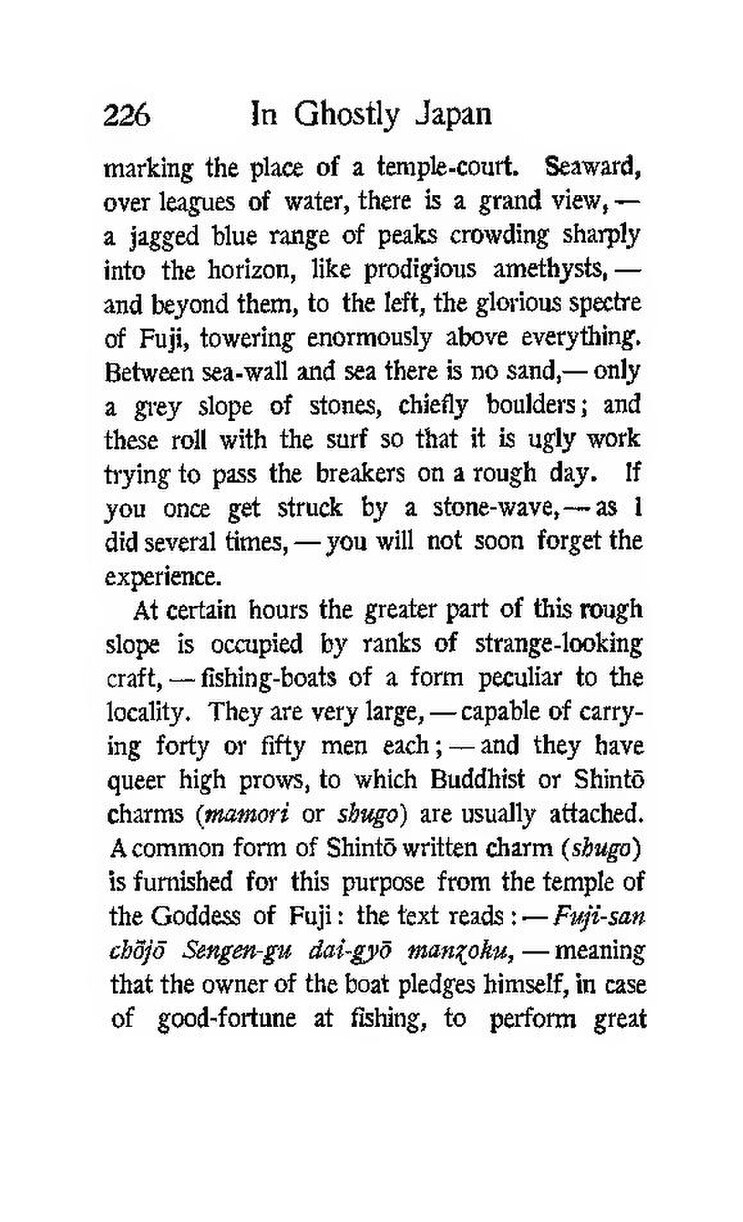marking the place of a temple-court. Seaward, over leagues of water, there is a grand view,—a jagged blue range of peaks crowding sharply into the horizon, like prodigious amethysts,—and beyond them, to the left, the glorious spectre of Fuji, towering enormously above everything. Between sea-wall and sea there is no sand,—only a grey slope of stones, chiefly boulders; and these roll with the surf so that it is ugly work trying to pass the breakers on a rough day. If you once get struck by a stone-wave,—as I did several times,—you will not soon forget the experience.
At certain hours the greater part of this rough slope is occupied by ranks of strange-looking craft,—fishing-boats of a form peculiar to the locality. They are very large,—capable of carrying forty or fifty men each;—and they have queer high prows, to which Buddhist or Shintō charms (mamori or shugo) are usually attached. A common form of Shintō written charm (shugo) is furnished for this purpose from the temple of the Goddess of Fuji: the text reads;—Fuji-san chōjō Sengen-gu dai-gyō manzoku,—meaning that the owner of the boat pledges himself, in case of good-fortune at fishing, to perform great
